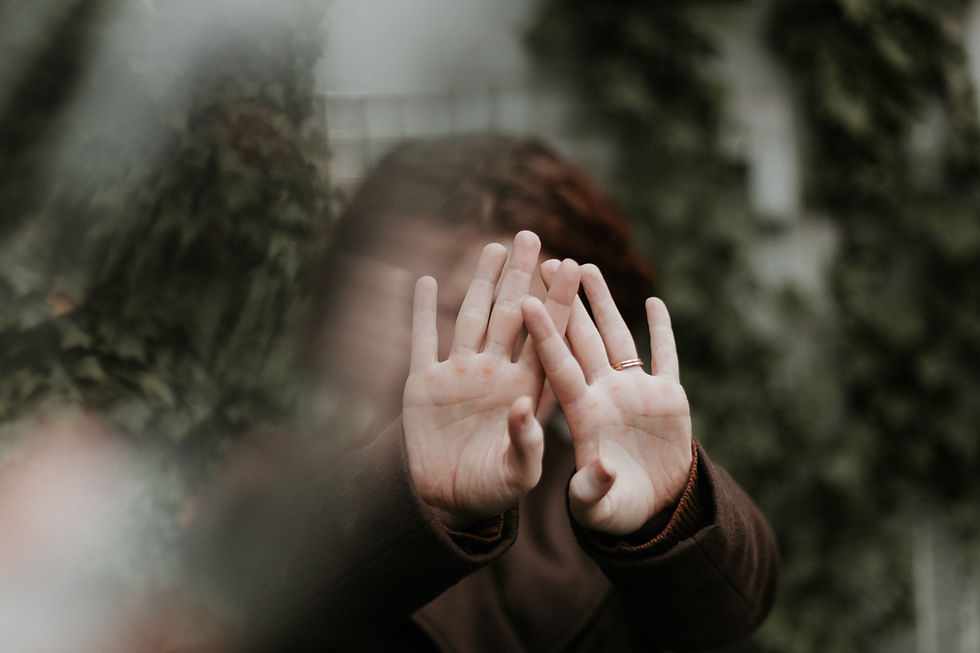Attachment Wounds & Trauma: How They Shape Your Relationships
- andersonabbiek
- 5 days ago
- 3 min read

Our earliest relationships shape how we connect with others—how we trust, communicate, and experience love. But when those early attachments are marked by inconsistency, neglect, or trauma, they can leave deep emotional wounds that impact our relationships well into adulthood.
If you’ve ever wondered why you struggle with trust, fear abandonment, or feel emotionally distant in relationships, attachment wounds and trauma may be at the root. Understanding this connection is the first step toward healing and building healthier, more fulfilling connections.
What Are Attachment Wounds?

Attachment wounds form when our early caregivers—parents, guardians, or significant figures—are unable to meet our emotional needs consistently. These wounds occur when a child experiences:
🚨 Neglect or Emotional Unavailability – Feeling unseen, unheard, or emotionally dismissed.
🚨 Inconsistent Care – Having love and attention that feels unpredictable or conditional.
🚨 Abandonment or Rejection – Losing a caregiver (physically or emotionally) and developing a deep fear of being left.
🚨 Over-Control or Parentification – Being forced to take on adult responsibilities at a young age instead of being cared for.
When these patterns repeat over time, they can create core wounds—deep-seated beliefs like “I am not worthy of love” or “I have to earn love by taking care of others.” These messages often play out in our adult relationships in ways we don’t even realize.
How Trauma and Attachment Wounds Impact Relationships
When we experience trauma, especially in childhood, it teaches our nervous system what to expect from relationships—whether we can trust others, whether love feels safe, and whether we feel worthy of connection. This can lead to different attachment styles, which shape how we interact in relationships.
1️⃣ Anxious Attachment: Fear of Abandonment
People with anxious attachment often:
💔 Fear being left or rejected in relationships.
💔 Seek constant reassurance from partners.
💔 Feel emotionally overwhelmed when they sense distance.
💔 Struggle with trusting that love is secure and lasting.
🔥 Example: You feel anxious when a partner doesn’t text back right away, assuming they are upset with you or losing interest.
🔹 Where It Comes From: This often develops from inconsistent caregiving—times when love and attention were unpredictable, making the child feel they had to work for connection.

2️⃣ Avoidant Attachment: Fear of Intimacy
People with avoidant attachment often:
💔 Feel uncomfortable with emotional closeness.
💔 Shut down or withdraw when conflicts arise.
💔 Value independence over connection.
💔 Struggle with expressing emotions or needs.
🔥 Example: You pull away when a partner wants to have deep conversations because vulnerability feels overwhelming or unsafe.
🔹 Where It Comes From: This often stems from emotionally unavailable caregivers—children learn that depending on others isn’t safe, so they learn to self-protect by shutting down.
3️⃣ Fearful-Avoidant Attachment: Push-Pull Dynamics
People with fearful-avoidant attachment often:
💔 Crave connection but fear being hurt.
💔 Feel torn between wanting love and pushing people away.
💔 Experience intense relationships that swing between closeness and distance.
💔 Struggle with trust due to past trauma.
🔥 Example: You long for intimacy but push partners away the moment they get too close, fearing they will eventually leave or hurt you.
🔹 Where It Comes From: This is often linked to trauma—especially childhood environments where love was both wanted and feared (e.g., abuse, neglect, or unpredictable caregiving).
4️⃣ Secure Attachment: Healthy, Balanced Love

People with secure attachment:
💛 Feel safe expressing their needs and emotions.
💛 Trust their partner without constant reassurance.
💛 Handle conflict without fear of abandonment.
💛 Give and receive love without losing themselves.
🔥 Example: You trust that your partner loves you even when they’re busy or stressed, and you can express your needs without fear.
🔹 Where It Comes From: Secure attachment is built when caregivers consistently provide love, safety, and emotional attunement. The good news? Even if you didn’t have this as a child, you can heal and create it as an adult.
Healing Attachment Wounds & Building Healthier Relationships
No matter your attachment style, healing is possible. Here’s how you can start working toward healthier relationships:
✅ Recognize Your Patterns – Awareness is key. Notice when old attachment wounds show up in relationships.
✅ Practice Self-Soothing – Learn how to regulate emotions without relying on external validation.
✅ Set Boundaries – Communicate your needs and limits clearly.
✅ Rewire Your Inner Beliefs – Challenge thoughts like “I’m not worthy of love” and replace them with healthier affirmations.
✅ Seek Trauma-Informed Therapy – Approaches like EMDR, IFS, and somatic therapy help reprocess past wounds so they no longer control your present relationships.
💡 Healing your attachment wounds doesn’t just change your relationships—it changes how you see yourself. When you learn to trust yourself and others healthily, connection no longer feels like a battle between fear and love.
📌 Have you noticed how attachment patterns show up in your relationships? Let’s chat in the comments! ⬇️

Comentários